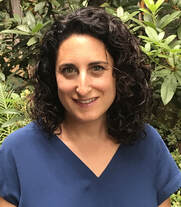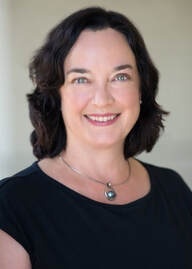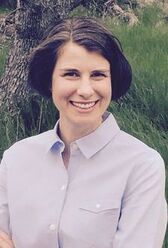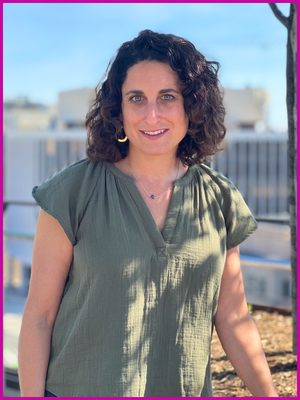Filling Our Buckets: How High-Achieving Students Should Be Spending Their Post-COVID-19 Summers3/29/2021  Liz Katz Liz Katz In the Before Times, high-achieving students spent their summers packing their resumés. Programs on university campuses, internships in research labs, travel opportunities—even though it was summer, they didn’t stop. But as COVID-19 spread, so did the waves of program cancellation. In Summer 2020, almost everyone stayed home. A year later, the national conversation on education is focused on learning loss. The prevailing narrative is that far too many students are far behind their usual acquisition of content. They haven’t learned what they needed to, the critics say, and we must focus on speeding up the pace of instruction as soon as possible, and for as long as it takes. There’s no doubt that our students haven’t covered the material they usually do in an academic year, but I don’t think that focusing the summer on remediation is the way to go. To explain why, I find myself returning to a metaphor my children learned in preschool: “filling your bucket.” That bucket is your sense of well-being, and it can be filled by kindness and care, or emptied by conflict and tension. Right now, our students don’t just have empty buckets—their buckets are so cracked that they couldn’t hold water if we tried to fill them. Trying to force all of our students into the same pattern of academic acquisition would be like trying to pour water in a bucket with a gaping hole. At the very minimum, our students have been managing chronic stress, long-term uncertainty, and isolation; many have also struggled with the effects of systemic racism, food instability, family responsibilities, and grief. As long as we ignore the social and emotional effects of the past twelve months, pushing students into activities that don’t fulfill them just can’t succeed. I hope that summers don’t return to the resumé-packing patterns we used to see among high-achieving students, because they reinforced a toxically narrow definition of success. For those students who were too burdened to learn effectively this year, seizing the summer as “free time” isn’t a viable option—it simply won’t work because these students are depleted. We need a third option: summers that repair and restore the well-being that students need to be able to learn. If we jump to remediation, we’re approaching learning and growth from a deficit-based mindset, zeroing in on what students are missing and then focusing all their attention on their shortfalls. Research is clear here: deficit thinking isn’t helpful. A strengths-based approach to summer asks students to reflect on what they need to be whole. To use that preschool metaphor, we’re asking students to identify what would allow them to repair and then fill those inner buckets. Let me be clear that I’m not calling to abandon academic options for the summer. For some students, intense inquiry and academic challenge is exactly what’s going to fill them back up; for others, the reassurance of reviewing material will minimize anxiety. As educators, we know who those kids are. Their needs, however, are just as meaningful as the needs of a child who needs to spend time in a community of art-makers, or the one who’s missed the camaraderie of a basketball team. In this time of rebuilding, we need to move away from the assumption that academic acquisition is the greatest goal of the high-achieving student. Instead, we need to see it as just one option among many for what makes teens whole. After a year when so many felt fractured, let’s not focus on filling resumés and filling out standardized test bubbles. Instead, let’s turn to filling our buckets, to the repair and renewal that restores a student’s sense of self.
0 Comments
 Sarah Hanawald Sarah Hanawald As a former English teacher turned tech director, my fascination with technology began with its power to make the world a better place. I’ve given countless presentations that incorporated the idea that what we imagine in our fiction becomes our reality--sometimes faster than we can imagine. Seriously--I have a whole slide deck on how we’re actually living in the world the creators of Star Trek imagined in the 1960’s! Having said that, I’m sad to report that virtual reality (VR) let me down. If there ever was a time for a technology to emerge as the shining hero, this would have been it. We could have seen VR classrooms with chemistry labs or digitally built sets for Shakespeare performances. Those of us who have been on a VR expedition or dissected a virtual human heart—or even just played Beat Saber—know how “nearly there” this technology is. During the COVID-19 pandemic, many schools began by looking for a technological solution to crisis distance learning. What most of them found at the end of the search was that new tech wasn’t the thing that saved them—it was the way that engaged, creative teachers used existing technology that made the difference. The role technology played was decidedly less glamorous than I’d imagined; technology infrastructure, rather than innovation, was key to ensuring learning continued as the long days of remote, concurrent, or hybrid learning turned into weeks and then months. School technology leaders worked long hours to ensure access for all students and faculty from home. The school’s Learning Management System (LMS), along with video connectivity became the backbone of remote learning, because consistency and reliability mattered more than anything else. We used technology to replace what we were already doing rather than to imagine how school might be different. Dr. Reuben Puentedura’s SAMR model of technology integration is a useful guide here. The S refers to “substitution” in which technology merely enables something we already do, e.g. a live lecture takes place via Zoom rather than in the classroom, then students meet in breakout rooms rather than turning their desks towards one another to work in small groups. And as Alex Podchaski, CETL, Director of Educational and Information Technology at North Broward Preparatory School, as well as founder and co-host of the weekly #EdTechChat on Twitter said, “There was a whole lot of S” in pandemic technology. It’s true that substitution was the focus of most school’s approaches to distance learning. And that makes sense—there was a crisis, and at the start of the crisis, it’s tempting to keep things as familiar as possible. The danger here is that we replicate systems that reinforce and widen inequities, continuing to disadvantage students who were already ill-served by systemic bias: students of color, working-class and poor students, neurodiverse students, and many others. Now, as we head into the next normal, it’s time to think about what we keep and what we leave behind. First things first—I hope we all agree that we’ll NEVER go back to a world where schools don’t provide LMS access via a single platform. It is unconscionable that a student with seven teachers might have to navigate seven different platforms just to create the day’s to-do list. The idea that one tool “better matches” a course is a decidedly teacher-centered stance, and we should never do that to children again. Time and again, students had the best experience when teachers made the effort to see the online experience from the student perspective. Just as learner-driven classrooms produce better outcomes, attending to the user experience makes online experiences more engaging and productive. Having said that, it’s my sincere hope that we’ll go “back” to thinking of technology as a frontier, a way to make change and discover new possibilities. As distance learning continued, there were many times when teachers and students created something new, with or without technology, that had never been done before. Let’s capture that entrepreneurial spirit! In the summer of 2020, students and alumni leveraged technology and social media to amplify voices that had been silenced for far too long and acted to compel school leaders to examine, understand, and act to change the injustices perpetrated upon Black students on independent school campuses. Their bravery and imagination is transforming their schools. Creativity has bloomed in students at San Diego Jewish Academy as they’ve built their own virtual reality worlds by learning to program in Unity. Those worlds don’t have to be boundaried by the limitations adults have set in place. If we ever need another stay-at-home order, those students will have grown to be the visionaries who will build the more equitable and transformational VR classrooms that the next generation deserves.  Corinne Dedini Corinne Dedini I’m back to remind you that online learning is here to stay. In the fall, we shared some of what schools had learned through what was - let’s be honest - crisis distance learning. In replacing synchronous in-person programs with distance or hybrid learning, schools discovered how resilient teachers and students are, and how much families value their independent school community. There’s now a renewed sense of schools’ value propositions because we have such a clear contrast to what is lost when school is distilled down to just for-credit course work. At the same time, we’ve also seen what can be gained when some learning is freed from the constraints of physical space or synchronous time. As schools plan for 21-22, both in-person and on-campus, we should take time to capture what has been learned. How can digital tools and online options make schools better -- more inclusive, more expansive, more effective? Elements of online learning that improve outcomes for students shouldn’t be abandoned once students are back in seats in classrooms. Online opportunities can be leveraged in everything from a school’s DEIB initiatives to its enrollment management strategy. In online courses this year, teachers learned they could create pathways that allowed students to see themselves and have their unique needs met within the curriculum, instead of having to raise a singular voice against a dominant culture. Some students thrived under remote learning: introverts weren’t so worn down by the liveliness of in-person learning and some neurodivergent students thrived under conditions that allowed for choice and scaffolded agency. What worked well in the crisis can be put to good use in planning for the new school year. Students who arrive in high school without Algebra I but want to reach Calculus by senior year can have the opportunity to complete a summer course, if it’s offered online. A wider range of voices, perspectives, and sources can be offered within a course when course materials are provided in an LMS instead of needing to be in print. Letting students record themselves on video for assignments ensures that every student will be seen and heard, no matter how quickly they formulate an opinion. To decide how you want to move forward with online learning, here are some questions to consider:
As I said on this blog last fall, learning happened in novel and productive ways because students and teachers adjusted to distance learning. That flexibility and resilience is worth celebrating and cultivating. Schools should use every tool they have to create better outcomes for students, and that includes the new tools we’ve crafted in the online space over the past year. Before you move on, take time to reflect on what you want to carry forward--you’ll discover valuable lessons, practices, and strategies to retain in the years to come.  Peter Gow Peter Gow Show me the academic leader at an independent school whose life hasn’t been turned upside-down a thousand and ten times since schools dispersed to remote mode almost a year ago. And show me the leader who does not expect this upheaval to continue at least through the coming summer. This year’s deluge of demands and the sometimes hesitant response of schools have made their impression on a market built on expectations. Lessons have been learned, including that opening campuses and maximizing on-campus activity is a market and admissions plus. This has had an ugly, politically tinged side: despite the personal wishes of many senior school leaders to have remained in remote mode and err on the side of caution, officials and commentators—not just COVID deniers, but also people inclined to be less cautious—have heaped praise on the “open private schools” and excoriated the public sector for keeping campuses closed to ensure the safety of students and staff. In some markets “open” private schools—including independents—have fed at the expense of public schools and others that have remained in all-remote or hybrid modes. What we regarded back in 2019 as a fundamental, values-based covenant between schools and families to deliver on mission has become, in the heat of the pandemic, a new kind of relationship. Academic leaders have experienced and been compelled to accede to tsunamis of personal requests—some that might have seemed laughable or outrageous in “normal” times, and many rooted in an expectation of privilege. For the moment it is as if the covenant has been replaced with a vast bank of switches whose functions may be personal, child by child, or explicitly transactional, a set of often private quid pro quos committing the school to keeping promises that may or may not bear any relationship to mission and values but are about expediency and convenience. Between now and whenever this pandemic “ends,” schools are going to build back their cultures, and along the way they are going to need to make a few more tough decisions Things that in 2019 might have seemed unimaginable are not just imaginable but aspects of practice and programs in schools today. “We don’t do that” is no longer an answer to many requests, because, even once or twice, we have. Of the “special,” pandemic-responsive little tweaks and occasional accommodations a school has made, which deserve to become part of the next normal? How can schools regain control of their missions and values in building holistic and internally consistent cultures that express the fundamental covenant that has shaped independent schools forever? Some COVID accommodations may have to go, quickly, and few will miss them. But others may hang around, and if they must, we need to make them our friends—must shape them and develop them as evolutions of what have “always” been the most cherished expressions of our missions and values and of what we regard as the ethical and cultural value propositions of our schools. Does a school continue to offer and refine some remote programming that has worked and may even have made life easier for all concerned? If this can be done equitably and in resonance with mission, why not? Why not offer a few or even more online classes, whether created right at the school or in partnership with, say, One Schoolhouse? Why not continue to make certain informational functions available online through streaming services? Why not make teacher–parent/guardian conferences available via Zoom for the convenience of families pressed for time? Of course performances and games and practices and rehearsals will take place on campus in shared physical space, but what if parts of the regional Model UN or debate or mock trial programs opt to continue as online experiences? Might your school do these things? When we have time to take a breath and look behind us with clearer vision, might not some of the accommodations we made in the pandemic even look like improvements? Have we not heard from families and even students that some parts of our COVID programming have in fact been better than what we offered before? What academic leaders must do, beset as they have been, is to think about what they have done in the past year and figure out which, of all the things we couldn’t imagine doing but have done under duress in the plague year, are worth keeping around. And then: Instead of waiting for more demands, each school and leader must forestall a wave of new, post-COVID demands by proudly and clearly proclaiming how much and how well the school has learned from the past year. And then, prove it: announce the “new” practices and policies, demonstrating the courage of their convictions and their rejection of cultures of quid pro quo privilege. Because it’s going to be really important for academic leaders and schools to return to the place where they can say with confidence and pride, “We don’t do that”—and to be able to say this with a full and firm belief in the mission and fundamental values that underlie the entire being of the institution.
And that, of course, leaves us with the question, “What’s next?”
One answer to that question is “Finally, we can get back to the way things were!” We miss the easy connections of pre-pandemic life: students crowding around a table to watch a lab demonstration, community assemblies, raucous crowds of spectators at athletic events. At the same time, we need to remember that we weren’t always in love with the pre-pandemic world: overscheduled days that started too early and ended too late, and the drumbeat of standardized testing. Going back to where we were a year ago isn’t an option. We don’t want to stay in the constant uncertainty that has driven us for the past twelve months, and we don’t want to lose the radical resilience, imagination, and innovation we’ve developed. Consulting company McKinsey coined the term “The Next Normal” to describe this future that will be irrevocably shaped by the experience of the pandemic. Over the next five months, we’ll be exploring what the next normal can look like for independent schools. Through blog posts, newsletters, and webinars, we’ll take a look at the ways that academic leaders can shape their schools’ evolution and transformation. Through the end of the school year, we’ll be talking about the near future—what the next one to five years will look like. We begin with Tim Fish, Chief Innovation Officer of the National Association of Independent Schools, who will set the stage for our conversations. In future weeks, we’ll talk about the ways the past twelve months can transform our approaches to and actions on topics like equity, faculty culture, finances, technology, and much more. Over the summer, we’ll look further out, exploring blue sky thinking about the issues that will affect our schools ten years from now. We want to hear from you--what do you think the next normal needs to be for your school, and what support do you need to get there? |
Don't miss our weekly blog posts by joining our newsletter mailing list below:AuthorsBrad Rathgeber (he/him/his) Archives
July 2024
Categories |


 RSS Feed
RSS Feed